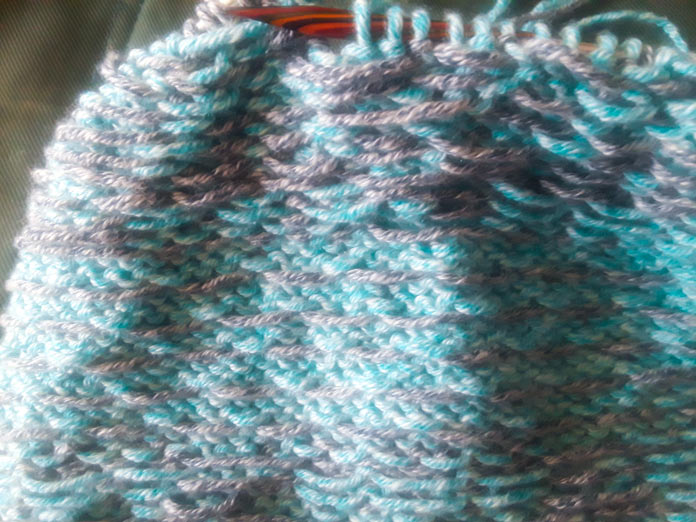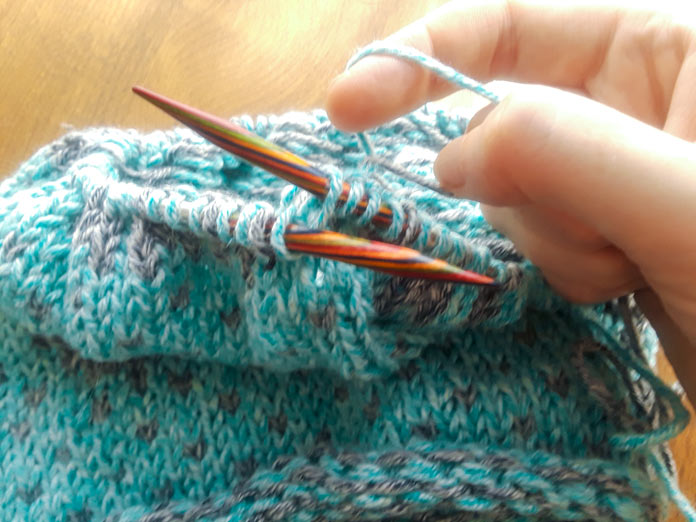Yesterday, I wrote about color dominance in stranded knitting, while working on the Holland Cowl pattern using UNIVERSAL YARN Mystical Marl. Continuing the theme, today I’ll talk about how to catch floats in stranded knitting!

Taming your floats in stranded knitting is a useful skill when knitting the Holland Cowl!
First, what is a float? It’s the strand of yarn that’s carried across the wrong side of the work when you’re not working that color. Sounds simple enough, right? But you can’t carry a strand of yarn indefinitely. Three stitches, even five stitches? Usually, no problem. But 10 stitches, 20 stitches? You’ll just end up with a loose loop of yarn on the backside of your work, ready and waiting to snag on things – even a yarn as smooth as the Mystical Marl Yarn could easily catch on fingers or hair clips if your floats are too long. Leave your floats too long or too loose, and you’re in for a bad time with your knitting.
So what can you do? The answer is very simple: Knit 3 to 4 stitches, then twist your yarns together once, then keep knitting. The twist will lock the color you’re carrying in place. A good example of this is in row 47 of the Holland Cowl pattern.

Catching your floats in stranded knitting is super important! The Holland Cowl pattern is a great pattern to learn on!
In row 47, we have a stretch of 7 stitches in Mystical Marl Yarn in Lagoon, that is, the background color of the pattern. The Holland Cowl pattern itself suggests catching your floats approximately every five stitches, but I prefer to aim between 3 and 4 stitches, depending on the size of the gap I’m facing.
So, somewhere in the middle of the gap is where you twist your yarn. This gives you a stretch of 3 stitches and a stretch of 4 stitches, both of which are perfectly reasonable!

Where do you catch your floats in stranded knitting? Here’s a look at the Holland Cowl pattern to help find out!
You’ll use this technique on many rounds of the Holland Cowl pattern, and it’s the same each time. Work 3 to 5 stitches, twist your yarns together, and keep working with the same color of yarn.
What does this do? Well, it keeps the strands on the wrong side of the work from sagging all over the place. Not only does this mean there are no loops to snag on fingers, glasses, or hairpins, but it also means your tension will be neater, since there are no big loose loops at the back to throw it off. Don’t pull too hard while you’re twisting, though, or you can end up with puckering in your work since you’ve pulled your yarn too tight!
That said, getting perfect tension in stranded colorwork can be a bit of a trick. But there are a couple of tricks after the fact that can help if you spot a tension mishap in your finished object.
Join me tomorrow, where I’ll go over finishing and blocking the Holland Cowl – and yes, you absolutely can block acrylic blends like the Mystical Marl yarn. See you then!
